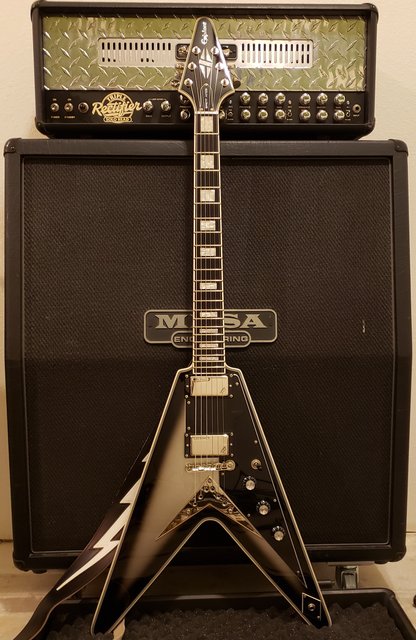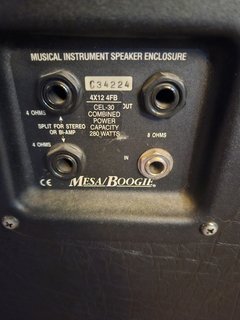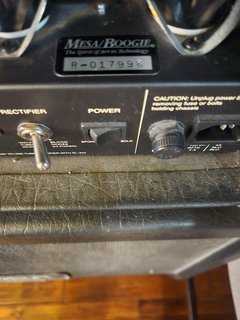Thundermtn
New member
- Joined
- Mar 12, 2024
- Messages
- 4
- Reaction score
- 0
Hey everyone. So I bought my Triple Rec new in '01. Since then it's played a bunch of shows and been rolled, lugged, and grunted all over the place.

It always sounded great with just about zero knob tweaking and was a solid piece of gear. It is so solid and reliable I never really even thought about it. Just warmed it up and let it rip.
Now here I am nearly twenty-five years later and it's never had a problem, ever. Stock as a rock and probably on it's forth set of tubes. It probably didn't need that many sets but sometimes I'd hear what I guessed was AM radio playing and figured it was time for tubes if it had been three or four years. Later I learned the tubes were probably fine, but I know exactly ZERO about how the circut works, and it was always sounding good so I didn't mess with it much other than fresh tubes. Not broke, don't fix.
Anyway I'm here now to ask about if I should get it serviced since it's coming out of moth balls for about five years now. Also if there are any tricks or tips about getting it to sound even better that a leave well enough alone player may not have looked for. It was on loan for a couple years and the guy had it setup to not use the footswitch and it was sounding better than what I normally used back in the day. It sounded bigger and tighter with less hissing. What's the deal there? I only use the third channel so should I take it back to where he had it, IDK.
Near as I can tell, I think it's a relatively early C+ three Ch., that has in the neighborhood of five hundred hours of roaring full blast metal.
Thanks for any advice you might have.



It always sounded great with just about zero knob tweaking and was a solid piece of gear. It is so solid and reliable I never really even thought about it. Just warmed it up and let it rip.
Now here I am nearly twenty-five years later and it's never had a problem, ever. Stock as a rock and probably on it's forth set of tubes. It probably didn't need that many sets but sometimes I'd hear what I guessed was AM radio playing and figured it was time for tubes if it had been three or four years. Later I learned the tubes were probably fine, but I know exactly ZERO about how the circut works, and it was always sounding good so I didn't mess with it much other than fresh tubes. Not broke, don't fix.
Anyway I'm here now to ask about if I should get it serviced since it's coming out of moth balls for about five years now. Also if there are any tricks or tips about getting it to sound even better that a leave well enough alone player may not have looked for. It was on loan for a couple years and the guy had it setup to not use the footswitch and it was sounding better than what I normally used back in the day. It sounded bigger and tighter with less hissing. What's the deal there? I only use the third channel so should I take it back to where he had it, IDK.
Near as I can tell, I think it's a relatively early C+ three Ch., that has in the neighborhood of five hundred hours of roaring full blast metal.
Thanks for any advice you might have.





